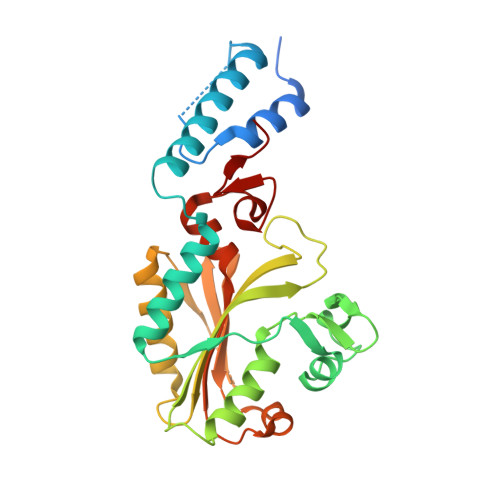Stereochemical Basis for Engineered Pyrrolysyl-tRNA Synthetase and the Efficient in Vivo Incorporation of Structurally Divergent Non-native Amino Acids.
Takimoto, J.K., Dellas, N., Noel, J.P., Wang, L.(2011) ACS Chem Biol 6: 733-743
- PubMed: 21545173
- DOI: https://doi.org/10.1021/cb200057a
- Primary Citation of Related Structures:
3QTC - PubMed Abstract:
Unnatural amino acids (Uaas) can be translationally incorporated into proteins in vivo using evolved tRNA/aminoacyl-tRNA synthetase (RS) pairs, affording chemistries inaccessible when restricted to the 20 natural amino acids. To date, most evolved RSs aminoacylate Uaas chemically similar to the native substrate of the wild-type RS; these conservative changes limit the scope of Uaa applications. Here, we adapt Methanosarcina mazei PylRS to charge a noticeably disparate Uaa, O-methyl-l-tyrosine (Ome). In addition, the 1.75 Å X-ray crystal structure of the evolved PylRS complexed with Ome and a non-hydrolyzable ATP analogue reveals the stereochemical determinants for substrate selection. Catalytically synergistic active site mutations remodel the substrate-binding cavity, providing a shortened but wider active site. In particular, mutation of Asn346, a residue critical for specific selection and turnover of the Pyl chemical core, accommodates different side chains while the central role of Asn346 in aminoacylation is rescued through compensatory hydrogen bonding provided by A302T. This multifaceted analysis provides a new starting point for engineering PylRS to aminoacylate a significantly more diverse selection of Uaas than previously anticipated.
Organizational Affiliation:
The Jack H. Skirball Center for Chemical Biology & Proteomics, The Salk Institute for Biological Studies, 10010 North Torrey Pines Road, La Jolla, California 92037, United States.


















